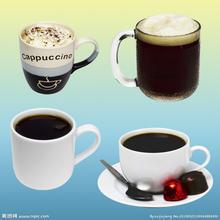Panama Rosa Coffee with unique Flavor; introduction to the planting environment of the manor area
Land use in Panama: 8.9 per cent cropland, 20.0 per cent permanent pastures, 43.0 per cent forests and woodlands, 28.1 per cent others; 0.6 acres of cropland per capita. [2]
mineral resources
Panama is rich in mineral resources, but not much is mined and the mines are small. The main minerals are gold, silver, copper, iron, mercury, bauxite, manganese, salt, oil and so on. Copper, salt, bauxite reserves are relatively large. As of 2013, Panama's copper ore reserves exceeded 200 million tons, ranking fourth in the world, and proven copper reserves could be mined for 50 years. [5]
forest resources
Panama is rich in forest resources, and there are many species of trees, including mahogany, cedar, teak, rosewood and other precious timber. The forest area in eastern Dalian Province is the most widely distributed, but it has not been fully developed due to lack of market and reasons such as national defense and protection of natural ecological environment. [5]FAO estimated in 2010 that Panama's forest area was 4.29 million hectares, or 57 per cent of its land area. [9]
The Panamanian flag was adopted on November 3, 1904, and is rectangular in shape, with an aspect ratio of 3:2. The flag consists of four rectangles of white, red and blue. White symbolizes peace; red and blue represent the Liberal Party and Conservative Party of Panama, respectively, and are also symbols of the unity and struggle of the two parties for the interests of the nation. The blue star on the upper left represents loyalty and integrity, and the red star on the lower right represents the authority of the law. The design of the crosshairs divided into four sections represents Panama's location at the junction of South America, North America, the Atlantic Ocean and the Pacific Ocean. Red, blue and white are the colors of the United States Star Spangled Banner, which supports Panama's independence. The flag was designed by Panama's first president Manuel Amador Guerrero. [6]
Panama's coat of arms was first used in 1904 and consists of a brown eagle with its head held high and its wings spread.
A white ribbon bearing the Panamanian motto "For the Good of the World" stands above the national emblem. In the middle of the national emblem are the coffee-colored isthmus of Panama, the blue Pacific Ocean and the Caribbean Sea and the Panama Canal connecting them; under the blue sky, a bright moon has risen, and the corresponding sunset afterglow has not been exhausted, and golden light is shining, symbolizing Panama's independence is coming at the "sunset and moonrise"; the silver sword and rifle crossed in the upper left have experienced the ups and downs of hundreds of years of war on Panamanian land; The T-pick and shovel on the upper right represent the call of active construction and hard work issued by the country; the horn overflowing from the lower gold coin and the golden double-wing flywheel symbolize the progress and prosperity of the country. Four flags decorated around the national emblem, the top nine gold stars represent Panama's nine provinces
Rosedale's dry nose is very bright, with rose and jasmine floral characteristics, but also can bring out grapefruit and citrus aromas, light toasted nutty aromas; wet nose also has hazelnut flavor, and emerging more floral characteristics. In terms of taste and flavor, it may be slightly mild and subtle compared with the previous aroma, slightly cooled down, and the fruity flavor gradually increases with the temperature drop. The cold aroma is excellent (sweet preserved fruit, rose hip, orange glaze sauce, strawberry jam, pine flavor, cherry, vanilla, rose gradually fade, and lemon flavor can be derived). This is a coffee that can be praised with a lot of adjectives, sweet back, and this (flavor) is testing the brightness of this coffee, especially in the case of light roasting Panama Geisha Hacienda La Esmeralda.
In the early years, the identification of top coffee mostly followed Japan, while Geisha carried the hurricane power to sweep the coffee world. This coffee revolution was fierce, so that the king and queen ~ Jamaica Blue Mountain and Hawaii Kona, who had occupied the throne of coffee kingdom for a long time, also had to retreat. This wild variety originally originated in Ethiopia, after experiencing countless battles, is now valued in all major coffee producing areas, and its best spokesman is the "La Esmeralda" estate from Panama. Esmeralda Manor's rosewood coffee is the most famous of the rosewood varieties

Important Notice :
前街咖啡 FrontStreet Coffee has moved to new addredd:
FrontStreet Coffee Address: 315,Donghua East Road,GuangZhou
Tel:020 38364473
- Prev

The fine acidity of Ethiopia's major coffee growing areas Manor Introduction
Ethiopia is located between 6 ° N and 9 ° N and between 34 ° E and 40 ° E. It is located in the center of the Horn of Africa and is a landlocked country. It borders Djibouti and Somalia in the east, Sudan in the northwest, Eritrea in the north and Kenya in the south. [5]Terrain Ethiopia is dominated by mountainous plateaus, mostly subordinate to the Ethiopian plateau, and the central and western regions are the main plateau, accounting for the whole territory.
- Next

Introduction to the planting environment of Bolivian coffee with dry flavor of almonds
(1) the Movement for Socialism (Movimiento Al Socialismo): founded in 1995. The ruling party. The emerging leftist political parties are widely participated in the national democratic forces. Oppose neoliberal economy and economic globalization. The largest political force in the Bolivian parliament. The party's leader is President Juan Evo Morales Emma (Juan Evo MORALES Ayma). (2) Poly
Related
- Detailed explanation of Jadeite planting Land in Panamanian Jadeite Manor introduction to the grading system of Jadeite competitive bidding, Red bid, Green bid and Rose Summer
- Story of Coffee planting in Brenka region of Costa Rica Stonehenge Manor anaerobic heavy honey treatment of flavor mouth
- What's on the barrel of Blue Mountain Coffee beans?
- Can American coffee also pull flowers? How to use hot American style to pull out a good-looking pattern?
- Can you make a cold extract with coffee beans? What is the right proportion for cold-extracted coffee formula?
- Indonesian PWN Gold Mandrine Coffee Origin Features Flavor How to Chong? Mandolin coffee is American.
- A brief introduction to the flavor characteristics of Brazilian yellow bourbon coffee beans
- What is the effect of different water quality on the flavor of cold-extracted coffee? What kind of water is best for brewing coffee?
- Why do you think of Rose Summer whenever you mention Panamanian coffee?
- Introduction to the characteristics of authentic blue mountain coffee bean producing areas? What is the CIB Coffee Authority in Jamaica?

